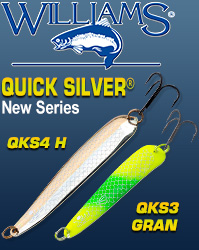Fencerows: Bad River Biology
John Luthens
It was a rolling, late-autumn laboratory of trees and hills and sparkling rivers that stretched east of Mellen, Wisconsin and along the northern borders of Ashland and Iron Counties. An Indian-summer sun slanted through a maze of fallen leaves and logs. Along the banks of a winding stream small enough to leap over, balsam pines contested positions with birch trees and alder brush. It couldn’t have been a finer setting in which to wet my boots in the currents of watershed biology.
I tagged into the beautiful fall morning with Bobbi Rongstad and Sjana Schanning; members of the Bad River Watershed Association, a citizen-based organization that strives to sustain water quality in nearly 1000 square miles of tributary waters flowing from the Chequamegon National Forest and into the Lake Superior Basin.

Bobbi Rongstad collects macroinvertebrate samples along a tributary stream in the Bad River Watershed.
Schanning, the association’s president, currently works for the U.S. Forestry Service out of Hayward, while Rongstad serves as treasurer and lives and works in the beautiful wilds of Iron County. As is the case with many of the Bad River Watershed members, both women are well-versed in data collection and water-quality monitoring.
The group maintains baseline data throughout the Bad River Watershed, monitoring pH, temperature, and dissolved oxygen content, charting the ongoing health of the system and identifying potential water-quality issues.
Founded in 2001, the Watershed Association’s research has proved a valuable liaison between local land owners and government resource agencies, improving erosion control by replacing outdated road culverts and helping farmers establish beneficial agricultural practices, while at the same time fostering a healthy relationship between the needs of the local community and the goals of watershed management.
One of the best ways to gauge the quality of a waterway, and the reason I found myself on a pristine, natural-reproducing trout stream that has no name (I’m not being secretive – it really doesn’t) is to monitor the abundance and type of the aquatic insects found in various streambed habitat.
The proper and scientific title of our sampling was ‘Macroinvertebrate Monitoring’ – meaning collecting organisms that lack internal skeletons or backbones, but are large enough to be seen with the naked eye. And while I’ve been told a time or two that I could loosely fit the bill on this type of specimen circuit, what we’re really talking is stonefly nymphs, worms, freshwater shrimp, and other terrestrial fish food here.

Sjana Schanning sketches the forest growth along a stream section in Iron County.
As I inspected dip nets of aquatic life from the stream bottom, tentatively probing the net with a finger, looking for any wiggling signs life, Rongstad waited on the bank with a lab bucket and tweezers for picking out the tiny critters. She laughingly offered up advice. “Really dig in with your boots. You gotta be dancing to stir those bugs up.”
Schanning, meanwhile, told me that one of the central reasons she enjoyed her line of work, was the access it provided to form educated and scientific decisions about the environment. She entered data on a log sheet: mapping stream vegetation, measuring velocity flow, and characterizing the structure and habitat that made up a one-hundred meter study-stretch of curling water.
Both of my biologist companions were far more adept at finding and categorizing the bugs, and as far as entering the data on the log sheets, well, let’s just say that after I managed to lose the pencil twice amongst the piles of fallen leaves, I was soundly relieved of further clerical duties.
Schanning’s scientific entries were especially meticulous, doubtless a product of her environmental science background. Her notes went down clear and concise. They also never went down silent and static.
As I danced along the stream bottom, bringing samples in the net to be plucked out with tweezers, Sjana Schanning sang out tune after tune. Our lowland-forest biology classroom was treated to mediocre dancing and a very pretty voice, although it must be said that some of the songs were ribald enough to make a sailor blush.
By the end of the day, we‘d acquired an impressive collection of bugs to go along with a well-documented set of statistics. Myself, I got to spend a wonderful autumn day on a trout stream in one of the most untouched wilderness lands Wisconsin has to offer.
And thanks to two fine researchers, I got to participate in some fascinating stream biology that will hopefully serve to protect the pristine watershed of the Bad River for generations to come.









